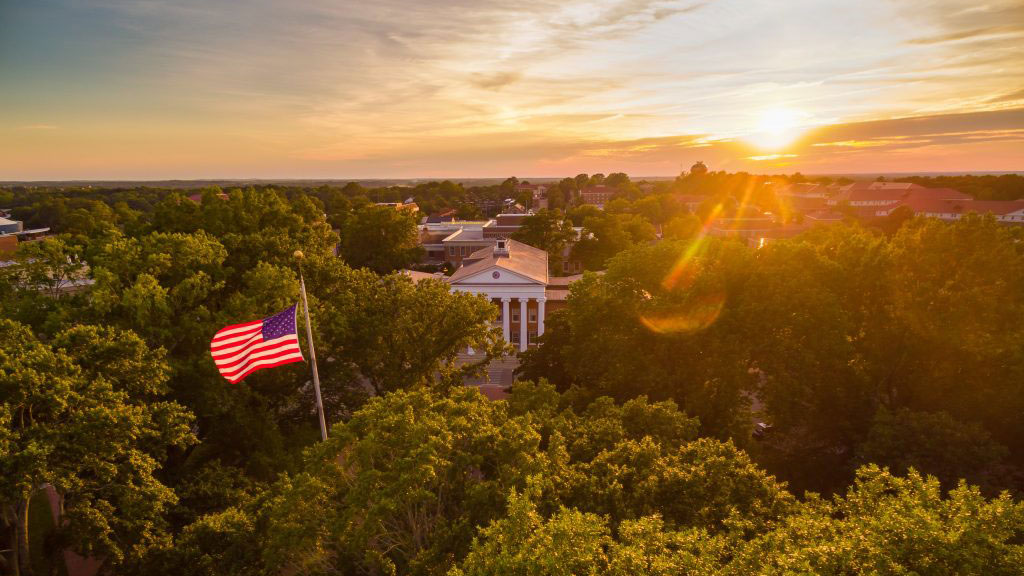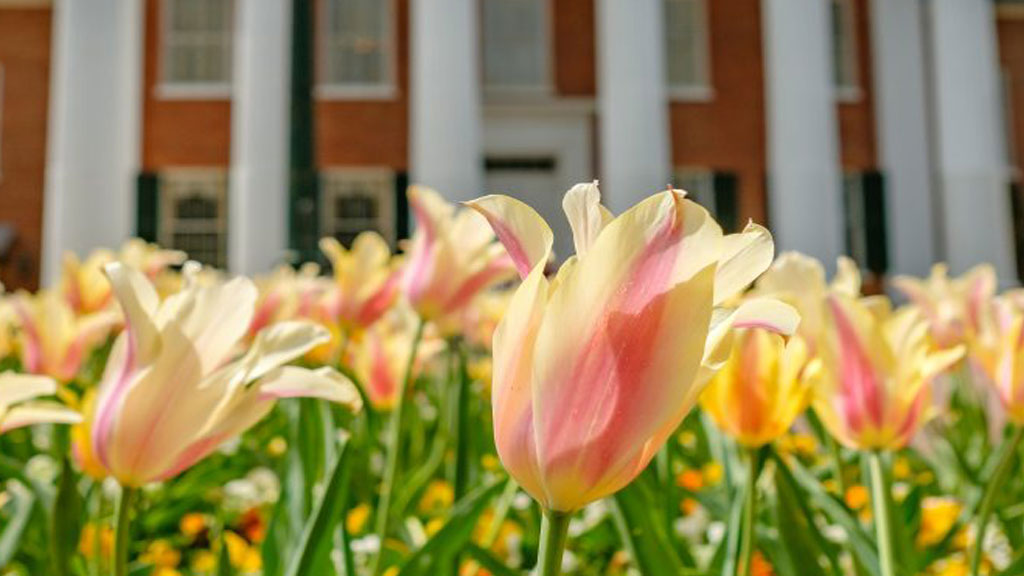Raksha Chatakondi and Greta Koshenina find their passions in exercise science and classics
On paper, best friends Greta Koshenina and Raksha Chatakondi have a lot in common.
They are both graduating seniors at the University of Mississippi and members of the Sally McDonnell Barksdale Honors College, each from small north Mississippi towns. They are both graduates of the Mississippi School for Mathematics and Science, a residential public high school in Columbus for academically talented juniors and seniors, where they first met and shared a suite in the residence hall.
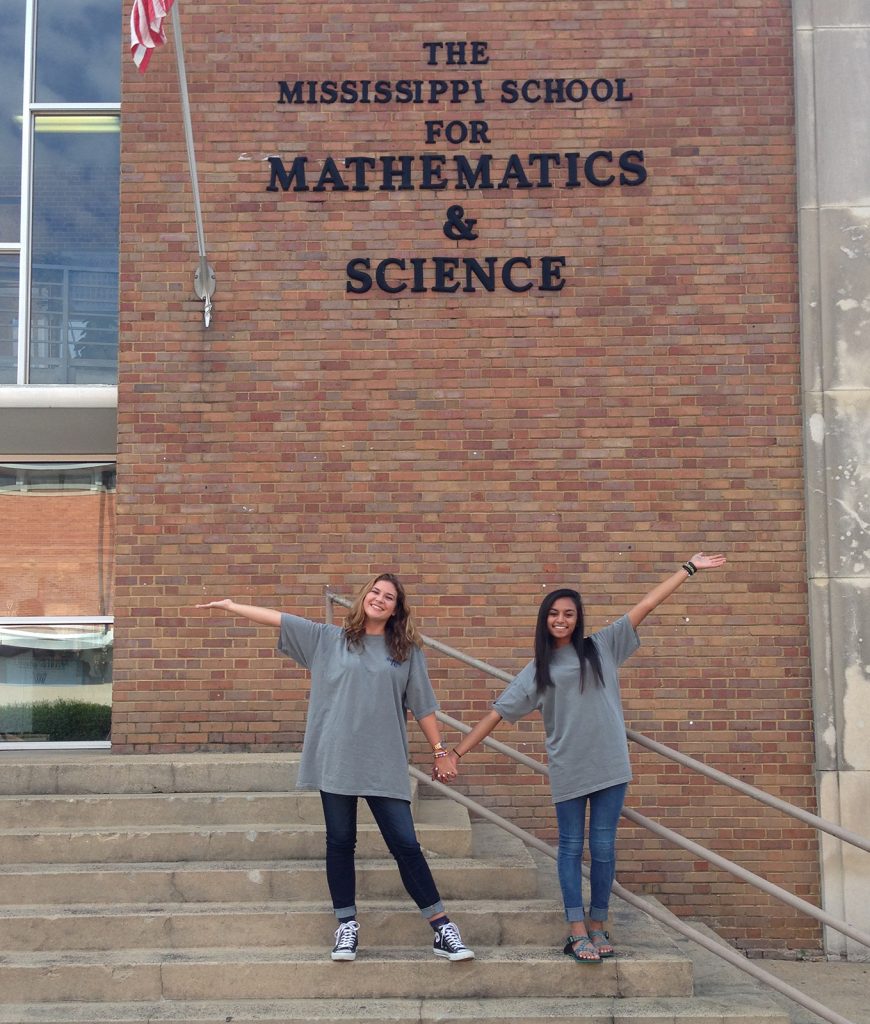
“We were both 16 years old when we began 11th grade at a residential high school, which is an incredibly new experience,” Chatakondi said. “Instead of letting our new classes, new environment, new friends and new passions form a wedge between our friendship, we used it to bring us closer together.
“When we started at Ole Miss in 2016, it was our experience at MSMS times 20 because there were so many new things going on.”
Their similarities and shared experience would serve as a catalyst for their friendship, but celebrating their incredible differences and the unexpected, diverging passions they each developed along their Ole Miss journey is the glue that keeps this dynamic duo going.
“Our nicknames for each other are actually Small Friend and Big Friend,” said Koshenina, a Water Valley native who – at 5 feet, 6 inches – towers nearly a half-foot over her dearest companion.
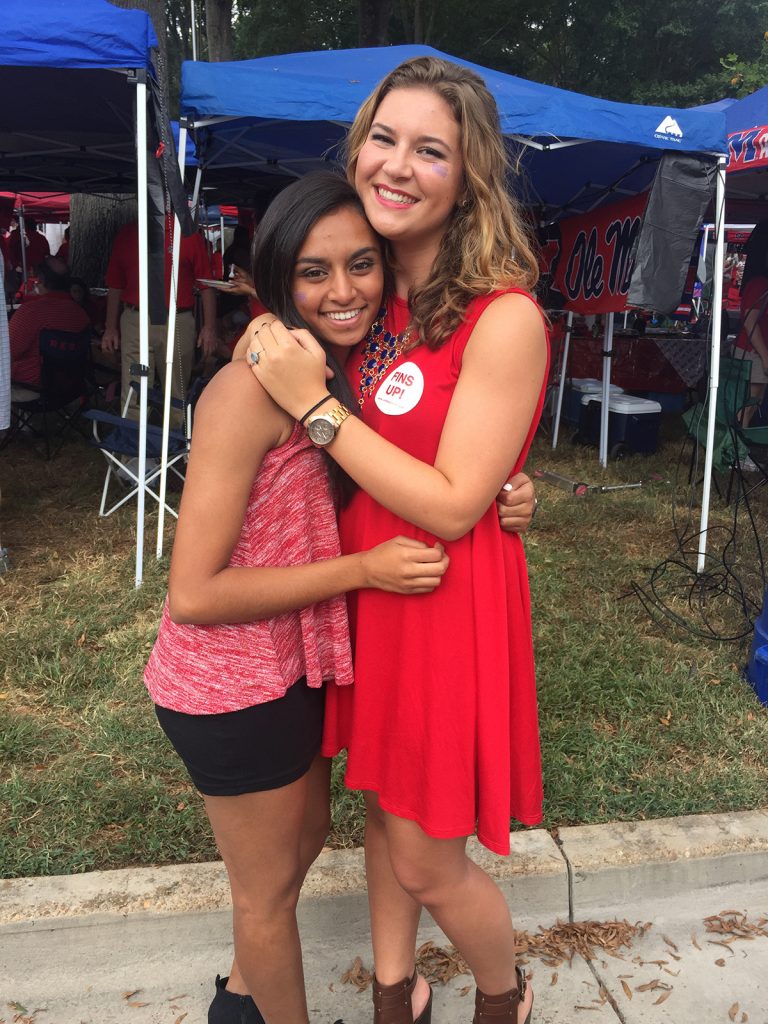
“Even when we were in high school, our scholastic differences were evident. Raksha was a chemistry genius and tried at no avail to help me understand. Her enthusiasm about the subject made me want to understand it and try harder. This pattern has continued throughout the years.
“The biggest difference between us is that Raksha always knew exactly what she wanted to do in the future, while I changed my mind almost weekly. Over the first two years of college, we both changed our majors until we found the perfect spot. We talked through our options constantly.”
Small Friend with a Big Heart
Chatakondi, of Greenville, always had a gift for science and knew from an early age that she wanted to attend medical school. In her early college career as a pre-med biology major, her organic chemistry lab partner introduced her to the idea of exercise science as an academic pathway to medical school.
She took a special topics course in exercise science under the direction of Jeremy Loenneke, a researcher in the field of therapeutic blood flow restriction and an assistant professor in the UM Department of Health, Exercise Science and Recreation Management.
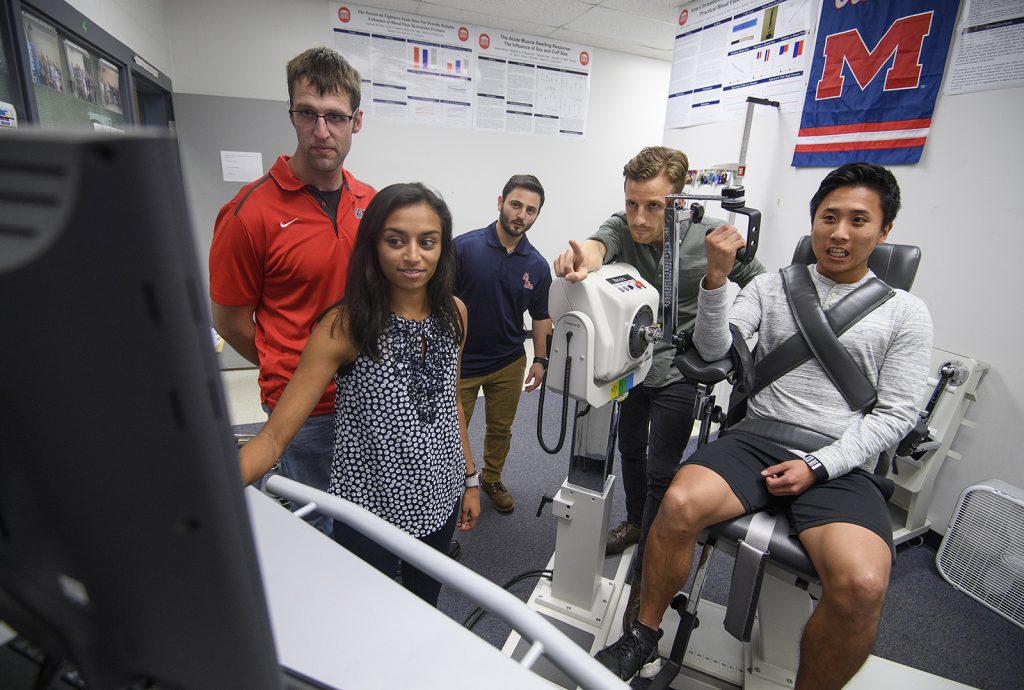
She realized then that she had found the perfect niche. The American Kinesiology Association Student Awards Committee affirmed her decision to switch to exercise science by naming Chatakondi as recipient of the 2020 AKA National Undergraduate Scholar Award, an honor that annually recognizes the nation’s top undergraduate kinesiology student.
When Chatakondi was relatively new to the exercise science program, Loenneke presented an article in class about his area of research that piqued her interest, and she asked if she could join his lab team and conduct her Honors College thesis research under his supervision. She helped with data collection and actively participated in twice-weekly meetings for the lab’s studies on muscular adaptations to different forms of exercise and the mechanisms that might be involved.
“Her honors thesis was related to understanding the perceptual response to blood flow-restricted exercise,” Loenneke said. “She has also provided great insight for many of the papers we have submitted for publication.”
Chatakondi joined Alpha Omicron Pi sorority as a freshman and later served as vice president of membership recruitment. During her time in the house, she learned that several of her sorority sisters suffered from varying forms of arthritis, which is the sorority’s philanthropy focus.
She realized that the blood flow restriction techniques she learned about in the lab potentially could help millions of people suffering from the joint disease.
“Before I came into the house and met these girls, I had no idea that little kids got arthritis,” Chatakondi said. “There are a lot of people that don’t realize that arthritis is so prevalent among little kids. When I started doing research in exercise science, I realized there could actually be a really interesting therapeutic application for blood flow restriction in an arthritic population.
“During our biweekly lab meetings, we read different research papers to keep up with the exercise science literature, and one of them was a blood flow restriction study taking place in a population of people with arthritis.”
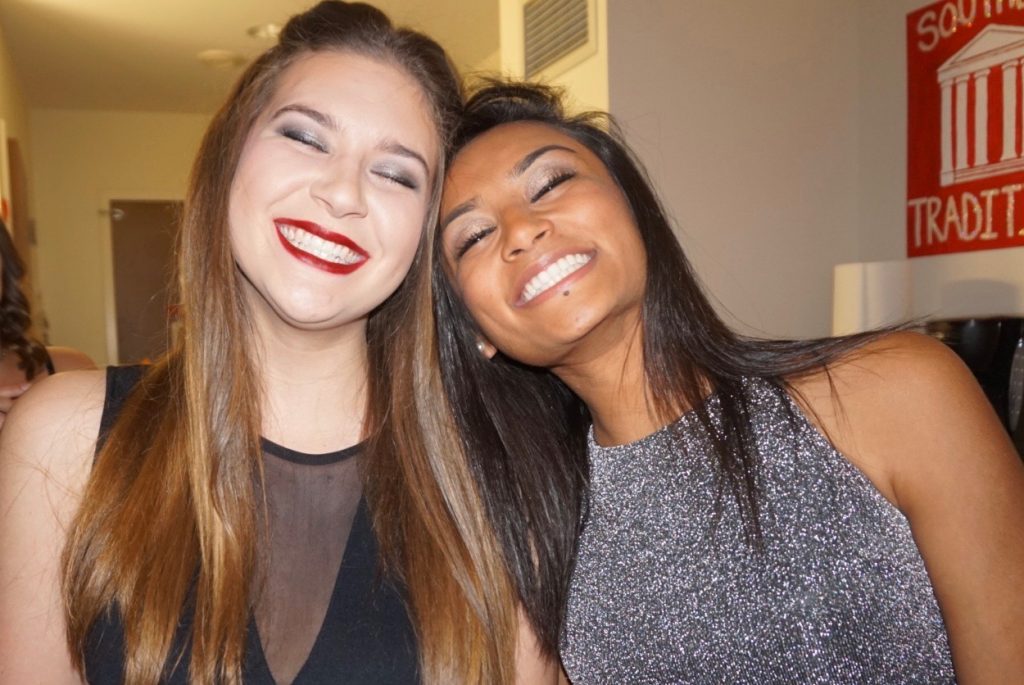
Honors College formal Spring 2017. 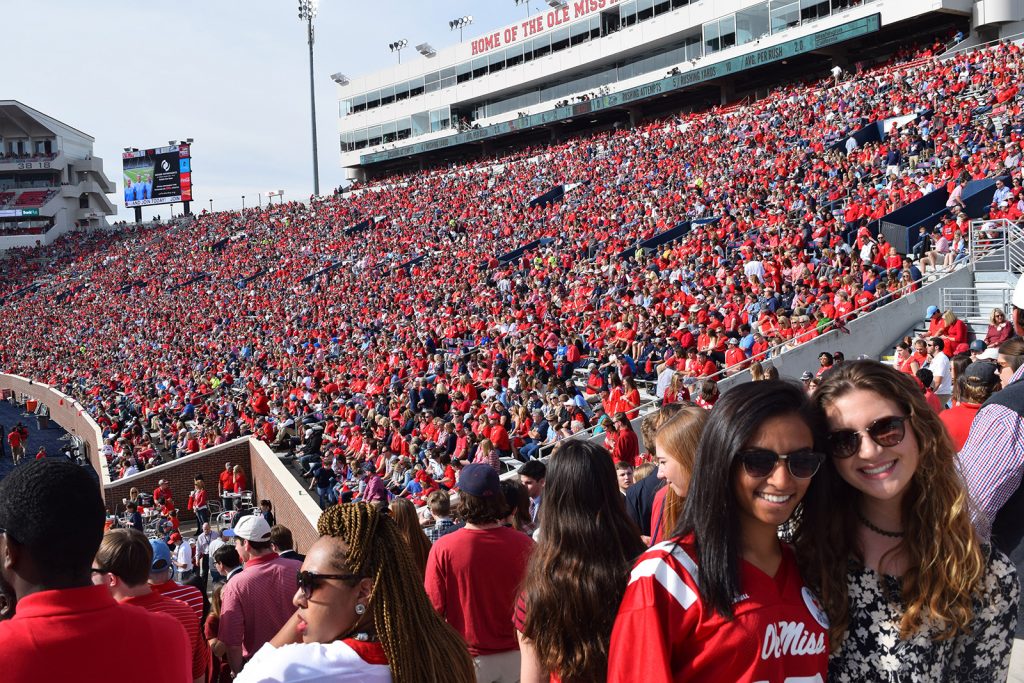
Ole Miss vs Auburn fall 2016. 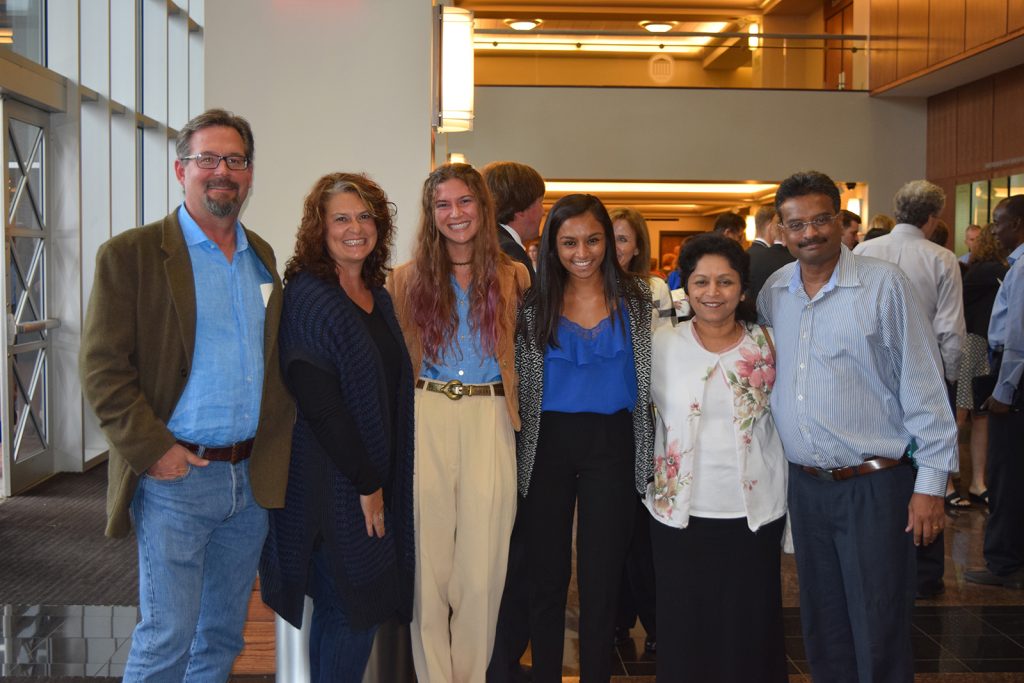
Phi Kappa Phi initiation with both of parents (Paul Koshenina, Anna Koshenina, Greta Koshenina, Raksha Chatakondi, Priya
Chatakondi, Nagaraj Chatakondi.
Her love of children, her lab experience and her sorority’s commitment to help find a cure for arthritis inspired her ultimate career goal of becoming a pediatric rheumatologist. As a new admit to the UM School of Medicine, she is looking forward to learning how her research experience can influence her future practice.
“I often have to remind myself that she is an undergraduate student because a lot of her work is graduate-level quality,” Loenneke said. “Raksha is what you get when you combine the ability to critically think with the ability to work incredibly hard for extended periods of time.
“She is also a kind and honest person, which are attributes that will serve her well in her future when she becomes a physician.”
Chatakondi is already familiar with the UMMC campus after completing a bioethics fellowship there last summer with Ralph Didlake, director of the Center for Bioethics and Medical Humanities. After taking Sarah Moses’ medical humanities class, she fell in love with the field and hopes to add a master’s in bioethics to her resume along the way.
One Day, Two Completely Different Paths
“Last summer, Raksha started her bioethics fellowship the same day I flew to Italy for the excavation,” Koshenina said. “It was serendipitous; two completely different paths starting on the same day.”
Koshenina was on an Etruscan excavation in the tiny city of Vescovado di Murlo, near Sienna. After studying in Salerno the summer after her freshman year to earn Italian language credits and learn more about the history and culture, she returned the summer after her junior year to work on her honors thesis about Etruscan women’s frequent and abundant use of amber in their burials.
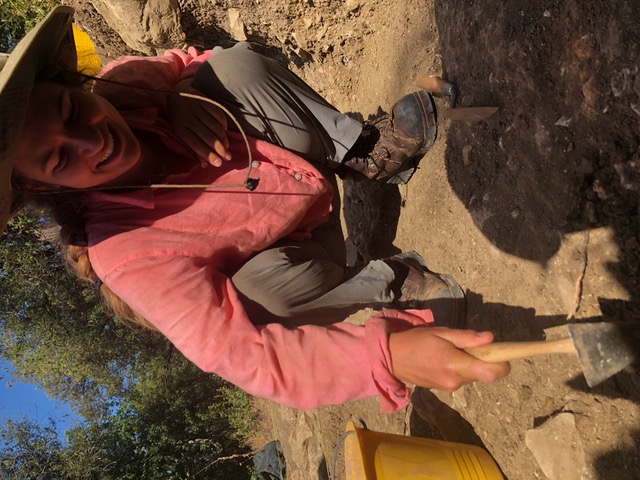
“I found out that one of the cities that I studied has anaerobic soil, so the amber did not oxidize and is still transparent, the exact same way that it would have been in antiquity,” she said. “I started looking at more and more of these artifacts and started seeing that they had very prominent inclusions in very elaborate and intricate pieces, so these pieces would have been expensive.
“It is my hypothesis that the Etruscans wanted the inclusions in there because it showed a past life – that these inclusions encapsulated this entire life inside of an object that they could wear every day and then be buried with and, if they did believe in reincarnation or an afterlife of sorts, that amber would be there with them.”
While she loved and excelled at math, Koshenina discovered her true passion for studying ancient cultures while taking a classics course as an elective.
“I started college with no major declared,” she said. “I declared physics as my major sophomore year and quickly realized it wasn’t for me, but I decided that I’d put too much work into math to just throw it all away, and I picked up a math minor.
“I was also in a classics course at the time, just an entry-level course, and I absolutely fell in love with that. I did become really good friends with the physics club, and I ended up becoming the vice president of it while I was a classics major. That was always pretty funny.”
Koshenina declared a second minor in Italian. She made her last trip to Italy, to Perugia, last fall for thesis research and museum studies experience. She had earned a fellowship through the Honors College to study at the Umbra Institute.
“The school where I attended classes was inside of the cathedral complex, and under the cathedral were Roman remains, and then under the Roman remains were Etruscan remains,” she said. “So I went to school every single day sitting on top of an Etruscan temple.”
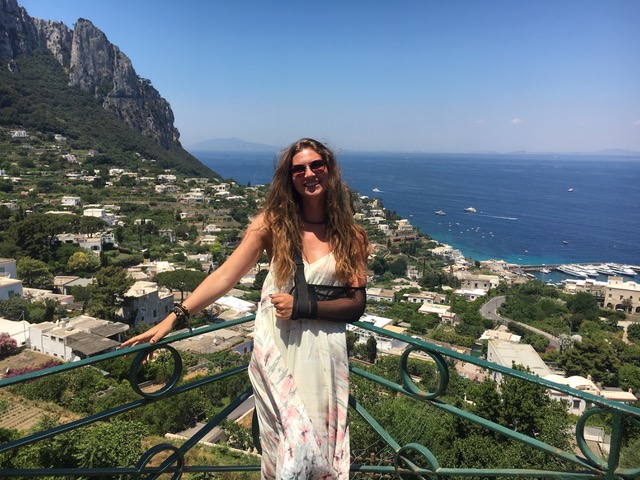
The classics program was a natural fit for Koshenina’s scholarly curiosity. Molly Pasco-Pranger, department chair and associate professor, said colleagues quickly noted her ability to pull together materials and methods from a variety of courses as she began building her own complex understanding of the ancient Mediterranean.
“She plunged into the study of the ancient world with both feet and has been an outstanding student in all areas of our curriculum,” Pasco-Pranger said. “Greta has been particularly enterprising in reaching beyond the classroom to expand her knowledge and experience through her work at the museum, her archaeological fieldwork experience, a study abroad semester and independent research for her Honors thesis.
“She has really amazing potential, and we are excited to see where she goes from here.”
Koshenina has been putting her knowledge and skills to use as an intern at the University Museum for the last two years, serving as a docent for William Faulkner’s Rowan Oak in her spare time. She will apply for a yearlong post-graduate internship with the museum to get all its antiquities online and create a public database for research.
Celebrating Self-discovery Together
Koshenina cried tears of joy on an Italian street during her last study abroad excursion when Chatakondi told her that she was accepted into medical school.
“For years, I had watched her work harder than I imagined possible, and it all paid off,” Koshenina said. “We’re each other’s biggest fans, and I know that I wouldn’t be here without her unconditional love, support and encouragement.
“I admire her grounded personality, and we embrace our differences rather than shy away from them. It only makes conversation more lively and interesting.”
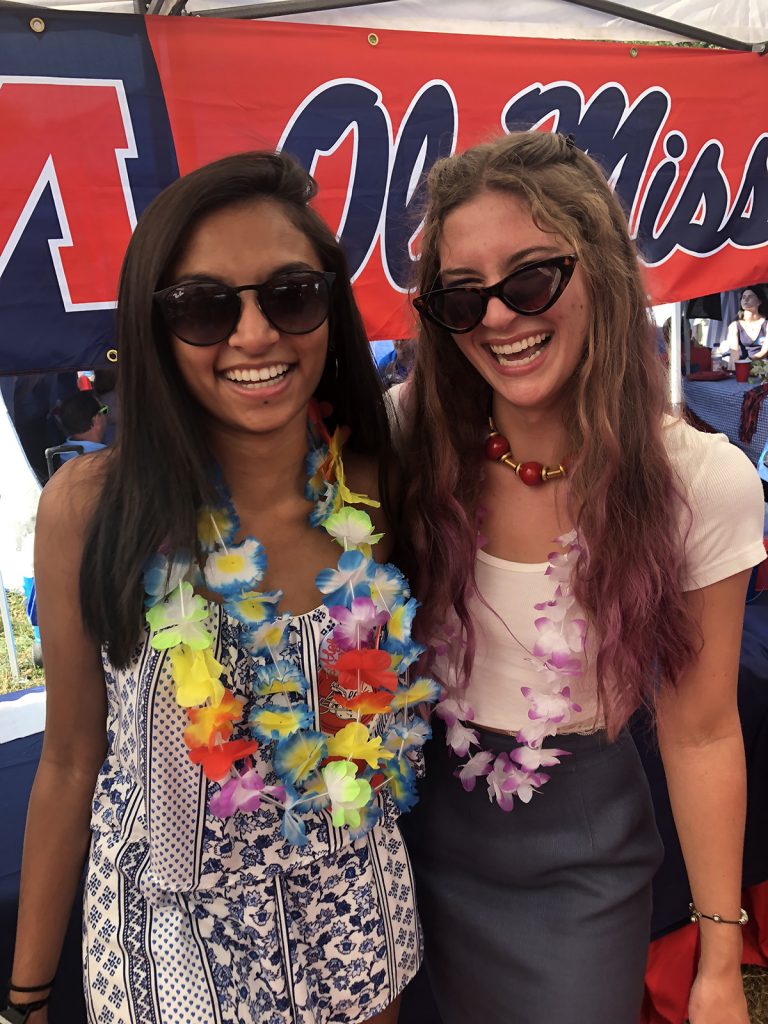
The two are equally invested in each other’s passions and dreams, Chatakondi said.
“Greta and I embarked on our journey of change together and switched our paths and direction at pretty much the same time,” she said. “She built up the courage to switch to classics, which was something that she was so passionate about, and it gave me the confidence to pursue exercise science.
“When she got super invested in working at the University Museum and studying abroad in Italy, it gave me the push that I needed to pursue the fellowship in bioethics, even though it wasn’t necessarily required for me to do.
“So, I think us being open and honest with each other about our passions and dreams helps the other move forward. We both provide a level of certainty and support for the other, and that proves to be just enough encouragement to keep us going.”
By Sarah Sapp/School of Applied Sciences

